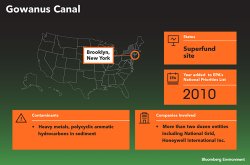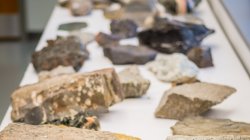Professor interviewed about Superfund site around the Gowanus Canal
Dr. Jessica Miller provides insight regarding the land around the canal which is included by the EPA on its National Priorities List as of 2010.
Posted in: In the Media

Designating a property a Superfund site sends a signal to developers, Jessica Miller, assistant professor of earth and environmental studies at Montclair State University, told Bloomberg Environment.
“Especially in a place like New York City, that means the green light to grab land,” she said.
When the EPA was considering naming the Gowanus Canal a Superfund site, active redevelopment efforts slowed down, but speculation increased, Aronowsky said.
Brooklyn’s Gowanus Canal is nearly two miles long. Starting in the mid-1800s, it was a major industrial transportation route and a dumping ground for paper mills, tanneries, and chemical plants.
Since the EPA added the site to its National Priorities List in 2010, a Whole Foods grocery store has moved in, bringing solar and wind powered facilities. New trees have been planted and green infrastructure improvements have drawn attention to the Gowanus Canal, Miller said.
That puts some residents, especially renters and elderly populations, at risk for displacement in the coming years, according to Miller. A New York City Department of City Planning framework for the Gowanus Canal prioritizes new, denser housing that creates and preserves affordable units.
“Affordable” is relative, Miller and others said, and potentially out of reach for many existing residents.
“We are working closely with the community and local elected officials to ensure the neighborhood remains mixed-use while becoming more inclusive and sustainable,” Joe Marvilli, a spokesman for the department, told Bloomberg Environment in an email.
Read the full article on Bloomberg News: ‘Gentrified Out of Existence’ as Gowanus, Toxic Sites Get Cleaner
